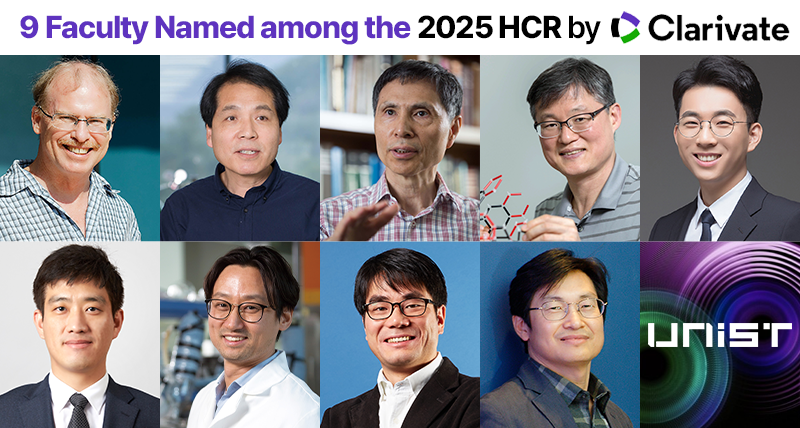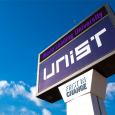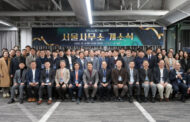Nine faculty members from UNIST have been named to the prestigious Highly Cited Researchers (HCR) 2025 list, compiled by Clarivate Analytics—an increase of two from 2024—positioning UNIST as South Korea’s second-highest-ranked institution, following Seoul National University.
The 2025 list recognizes 6,868 researchers from 60 countries and regions, identified through an extensive analysis of publications indexed in the Web of Science Core Collection from 2014 to 2024. To be selected, individuals must have authored papers that rank among the top 1% by citations within their respective fields over an 11-year period, while also demonstrating sustained research integrity and significant scholarly impact.
This year, 76 researchers from South Korea have been awarded Highly Cited Researchers 2025 designations, with UNIST contributing nine researchers. Seoul National University (SNU) secured the highest number of HCRs, followed by UNIST and Sungkyunkwan University (SKKU). This recognition underscores UNIST’s commitment to advancing cutting-edge research and fostering innovation across diverse scientific disciplines. The university continues to strengthen its position as a hub for influential research and groundbreaking discoveries, driven by the dedication and expertise of its faculty members.
The UNIST researchers who made the list this year are: △ Distinguished Professor Rodney S. Ruoff, △ Invited Distinguished Professor Sang Il Seok, △ Research Professor Kwang Soo Kim, △ Distinguished Professor Jong-Beom Baek, △ Professor Hyun-Wook Lee, △ Professor Seung Woo Cho, △ Professor Changduk Yang, △ Professor Hu Young Jeong, and △ Professor Tae Joo Shin.
Notably, Distinguished Professor Rodney S. Ruoff has been listed for 12 consecutive years—the longest streak among UNIST faculty—since the inception of the HCR ranking in 2014. His recognition reflects his global impact across materials science, chemistry, and physics, now extending into the cross-field category.
Invited Distinguished Professor Sang Il Seok and Research Professor Kwang Soo Kim have maintained their inclusion for eight consecutive years, underscoring their sustained research excellence. Distinguished Professor Seok is internationally recognized for his pioneering work on perovskite solar cells (PSCs), while Research Professor Kim is a leading expert in machine-learning and quantum-based new material design.
Distinguished Professor Jong-Beom Baek is a global authority on graphene and two-dimensional (2D) materials, previously earned six consecutive years of recognition (2018-2023). Specializing in real-time transmission electron microscopy (TEM) for batteries, Professor Hyun-Wook Lee has been selected for seven consecutive years, including six years in the cross-field category, for his contributions to high-resolution in-situ materials characterization.
Professor Hu Young Jeong has been named to the list for five years in the cross-field category for his contributions to advanced electron microscopy techniques. Professor Changduk Yang continues his streak with five years of recognition for his work on next-generation solar cells, while Professor Seung Woo Cho is listed for impactful contributions to CRISPER-based gene editing and biotechnology. Professor Tae Joo Shin, newly selected in 2025, is recognized for his expertise in synchrotron radiation-based structural analysis and advanced scattering methodologies for novel materials.
UNIST President Chong Rae Park commented, “Breakthrough research stems from the dedication of pioneering researchers and the research-centric environment we foster at UNIST,” adding “We will continue to build an ecosystem that supports our researchers’ pursuit of innovative, high-impact studies.”
Among Korean universities, SNU leads with 16 HCRs on the list, followed by UNIST with 9, and SKKU with 7. Internationally, the top countries are the United States with 2,670 HCRs, China with 1,406, the United Kingdom with 570, Germany with 363, and Australia with 312. Leading institutions include the Chinese Academy of Sciences (258), Harvard University (170), Stanford University (141), and Tsinghua University (91).
The full list of HCR 2025, along with detailed analysis and selection criteria, can be accessed on Clarivate’s official website: [https://clarivate.com/highly-cited-researchers](https://clarivate.com/highly-cited-researchers].












